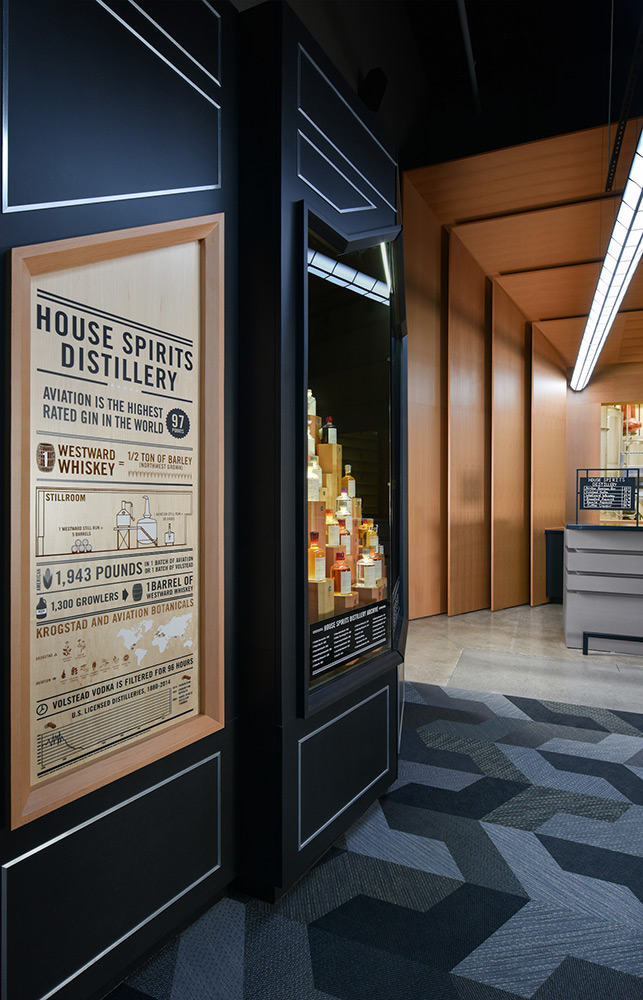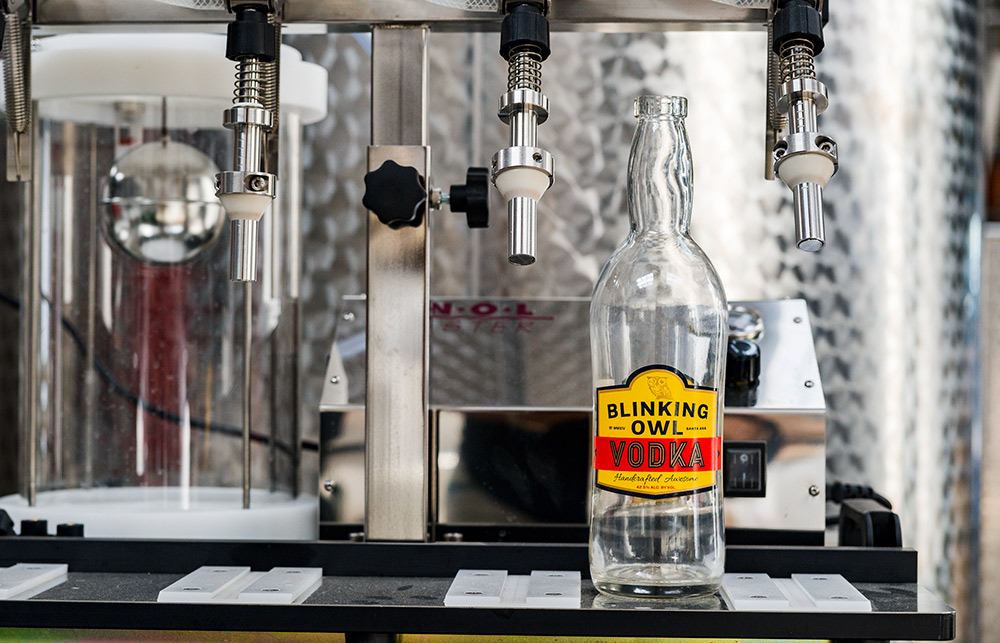经历过“禁酒令时期”的酒业,也能挺过疫情冲击吗?
克里斯·蒙塔纳是明尼苏达州杜诺德酒厂的老板,他耗费了整整一天的时间,才写出了一封致员工的邮件,内容是,他们即将失业。
“裁员是一件异常痛苦的事情,尤其是你亲自操刀的时候。” 蒙塔纳说。杜诺德的主打酿酒厂已有7年历史,但如果情况无法在短时间内得到改观,他担心公司就要成为历史了。
随着新冠疫情导致全美各大餐厅、酒吧、酒馆和品酒室关门歇业,酿酒行业成为经济中受冲击最为严重的一个行业之一,销售额和利润一夜之间不复存在,顶级酿酒厂和啤酒厂遭受重创。
一些大型酒厂已就这一财务窘境向华尔街投资者发出了警告。洋酒行业巨头帝亚吉欧上个月披露,公司在中国的销售额可能会减少数百万美元。其竞争对手保乐力加最近也发出了利润暴跌的警告。为稳住投资者的信心,墨西哥科罗娜啤酒的经销商星座品牌公司称,其向美国运送的科罗娜和其他墨西哥啤酒不会受到边境部分关闭的影响,而百威英博则下调了其2020年展望。

然而美国零零散散的小型精酿酒厂家则要脆弱得多,正面临着自上世纪20年代“禁酒令时期”以来最严峻的挑战。超过60%的精酿烈酒厂和啤酒厂均表示,受新冠疫情影响,公司即将或可能裁员。美国精酿烈酒协会的调查称,如果得不到政府的支持,有三分之二的精酿酒厂预计将不得不在三个月内关闭工厂。
结果就是,小企业可能会丢失数万份工作岗位,因为有这些企业的帮助,费城、克利夫兰和圣路易斯等城市才重振了经济活力。据行业内数据,美国现今正在经营的独立精酿烈酒厂有2000多家,精酿啤酒厂有7400多家,共计为超过17.5万个美国人提供了就业机会。
“一些精酿酒厂可能会陷入严重危机,因为他们依赖于每日进账的营收额。”行业组织蒸馏酒协会首席执行官克里斯·斯旺格说。受欧洲高额关税的影响,美国威士忌酿造厂商已经痛苦挣扎了数月时间。针对小型酿酒商的一年期税收缓交政策将于2020年底到期。
疫情期间,行业中有一些酒厂利用固有设备,用酒精来制作洗手液帮助解决医护人员消毒问题,也得到了很多赞誉,但这些洗手液都是按照成本价销售,或者直接捐赠。酒厂在网路销售方面也并不在行,大多数厂商在这方面的营收都十分有限。美国的酒类销售系统分为三个层级,生产商必须首先销售给各经销商,后者再卖给酒类专卖店,以供成年消费者购买。耐克关闭店面后,可以直接把消费者引导到品牌线上门店,但帝亚吉欧和百威英博则必须通过其他渠道来引导消费者购买其产品。

与众多酒厂一样,位于俄勒冈州的Westward威士忌酒厂也被迫做出相应调整,他们开始提供路边取货服务,也增强了本地快递业务,他们也加强了与一些线上销售商的合作力度。“我们打造品牌的方式,满足各种需求的方式,都发生了翻天覆地的变化。”该酒厂首席执行官汤姆·穆尼说。
Flaviar威士忌俱乐部首席执行官佩特科维克称,不少精酿酒厂来咨询新业务,由于失去了酒厂、当地酒吧和餐厅的收入,他们希望在营销上另辟蹊径。过去30天,Flaviar的伏特加销量飙升了84%,梅斯卡尔酒和干邑的需求大涨了64%,因为越来越多的美国人开始在家饮酒,自己动手做鸡尾酒。
Catoctin Creek酿酒厂联合创始人斯考特·哈里斯承认,他之前并没有太多时间在做电商。他们弗吉尼亚州的工厂,现在日常产量大减,不过威士忌依然在酒桶中陈酿。这家小公司的所有20名雇员还保留着工作,只不过一些销售人员被分配到了生产部门,为当地医院和警局制作洗手液。
加州橘郡Blinking Owl 酿酒厂的首席财务官罗宾·克里斯滕森说,3月初的时候,她感到商业环境极为恶劣,连自己都可能得去申请失业救济。“为了让企业能够活下去,我们给品酒室的所有人都放无薪假了。”
品酒室的关闭让Blinking Owl酒厂尤为痛苦,他们90%的收入都来自于这个渠道。在整个行业,小酒厂总销售额中,平均有高达44%来自直接销售。

在美国政府实施的2万亿美元大型经济刺激计划中,有3500多亿美元是小企业贷款。蒸馏酒协会支持该法案,特别是其中为生产洗手液的酿酒商减免税费的政策。
一些酿酒商认为,援助应该更快到位。“我们现在就需要钱。”纽约上州的Lake Placid 和Big Slide 啤酒厂创始人克里斯·埃里克森说。他表示,贷款这类形式的援助还是很难消化,他们更希望的是,只要公司在经济好转后重新聘请员工,贷款或拨款可以免于偿还。
埃里克森目前的日子十分难过。他经营的两家啤酒厂位于一个旅游小镇,然而,随着大学曲棍球联赛和国际同步滑冰锦标赛的取消,当地的经济已近干涸。在纽约下令关闭酒吧和餐厅的那一天,他不得不裁掉了88名员工。
“这发生的一切不像是真的。没有人会开着销售额为零的公司。”埃里克森说。他设立了临时的外带业务,提供有限几种商品,销售外带啤酒。但像他这样的啤酒商将大部分资金都投在了酒厂或本地招聘,“干我们这行,有大额资金账户的人没几个。”他说。
纽约州是美国新冠疫情的重灾区,当地有464家啤酒厂,美国各州中,这个数量仅次于加州。
纽约州啤酒制造商协会执行董事保尔·利昂说,绝大多数啤酒厂已经把能解雇的都解雇了。为了生存,有一些摆起了路边摊或提供送货到家服务,但这只不过是权宜之计罢了。他预测,如果美国经济在四周内恢复正常,大多数纽约酒厂都能生存下来,“但如果这个时间变成了八周,能活下来的酒厂数量将大幅减少,” 利昂警告说,“一些酒厂将永远消失。”(财富中文网)
译者:Feb
责编:雨晨
克里斯·蒙塔纳是明尼苏达州杜诺德酒厂的老板,他耗费了整整一天的时间,才写出了一封致员工的邮件,内容是,他们即将失业。
“裁员是一件异常痛苦的事情,尤其是你亲自操刀的时候。” 蒙塔纳说。杜诺德的主打酿酒厂已有7年历史,但如果情况无法在短时间内得到改观,他担心公司就要成为历史了。
随着新冠疫情导致全美各大餐厅、酒吧、酒馆和品酒室关门歇业,酿酒行业成为经济中受冲击最为严重的一个行业之一,销售额和利润一夜之间不复存在,顶级酿酒厂和啤酒厂遭受重创。
一些大型酒厂已就这一财务窘境向华尔街投资者发出了警告。洋酒行业巨头帝亚吉欧上个月披露,公司在中国的销售额可能会减少数百万美元。其竞争对手保乐力加最近也发出了利润暴跌的警告。为稳住投资者的信心,墨西哥科罗娜啤酒的经销商星座品牌公司称,其向美国运送的科罗娜和其他墨西哥啤酒不会受到边境部分关闭的影响,而百威英博则下调了其2020年展望。
然而美国零零散散的小型精酿酒厂家则要脆弱得多,正面临着自上世纪20年代“禁酒令时期”以来最严峻的挑战。超过60%的精酿烈酒厂和啤酒厂均表示,受新冠疫情影响,公司即将或可能裁员。美国精酿烈酒协会的调查称,如果得不到政府的支持,有三分之二的精酿酒厂预计将不得不在三个月内关闭工厂。
结果就是,小企业可能会丢失数万份工作岗位,因为有这些企业的帮助,费城、克利夫兰和圣路易斯等城市才重振了经济活力。据行业内数据,美国现今正在经营的独立精酿烈酒厂有2000多家,精酿啤酒厂有7400多家,共计为超过17.5万个美国人提供了就业机会。
“一些精酿酒厂可能会陷入严重危机,因为他们依赖于每日进账的营收额。”行业组织蒸馏酒协会首席执行官克里斯·斯旺格说。受欧洲高额关税的影响,美国威士忌酿造厂商已经痛苦挣扎了数月时间。针对小型酿酒商的一年期税收缓交政策将于2020年底到期。
疫情期间,行业中有一些酒厂利用固有设备,用酒精来制作洗手液帮助解决医护人员消毒问题,也得到了很多赞誉,但这些洗手液都是按照成本价销售,或者直接捐赠。酒厂在网路销售方面也并不在行,大多数厂商在这方面的营收都十分有限。美国的酒类销售系统分为三个层级,生产商必须首先销售给各经销商,后者再卖给酒类专卖店,以供成年消费者购买。耐克关闭店面后,可以直接把消费者引导到品牌线上门店,但帝亚吉欧和百威英博则必须通过其他渠道来引导消费者购买其产品。
与众多酒厂一样,位于俄勒冈州的Westward威士忌酒厂也被迫做出相应调整,他们开始提供路边取货服务,也增强了本地快递业务,他们也加强了与一些线上销售商的合作力度。“我们打造品牌的方式,满足各种需求的方式,都发生了翻天覆地的变化。”该酒厂首席执行官汤姆·穆尼说。
Flaviar威士忌俱乐部首席执行官佩特科维克称,不少精酿酒厂来咨询新业务,由于失去了酒厂、当地酒吧和餐厅的收入,他们希望在营销上另辟蹊径。过去30天,Flaviar的伏特加销量飙升了84%,梅斯卡尔酒和干邑的需求大涨了64%,因为越来越多的美国人开始在家饮酒,自己动手做鸡尾酒。
Catoctin Creek酿酒厂联合创始人斯考特·哈里斯承认,他之前并没有太多时间在做电商。他们弗吉尼亚州的工厂,现在日常产量大减,不过威士忌依然在酒桶中陈酿。这家小公司的所有20名雇员还保留着工作,只不过一些销售人员被分配到了生产部门,为当地医院和警局制作洗手液。
加州橘郡Blinking Owl 酿酒厂的首席财务官罗宾·克里斯滕森说,3月初的时候,她感到商业环境极为恶劣,连自己都可能得去申请失业救济。“为了让企业能够活下去,我们给品酒室的所有人都放无薪假了。”
品酒室的关闭让Blinking Owl酒厂尤为痛苦,他们90%的收入都来自于这个渠道。在整个行业,小酒厂总销售额中,平均有高达44%来自直接销售。
在美国政府实施的2万亿美元大型经济刺激计划中,有3500多亿美元是小企业贷款。蒸馏酒协会支持该法案,特别是其中为生产洗手液的酿酒商减免税费的政策。
一些酿酒商认为,援助应该更快到位。“我们现在就需要钱。”纽约上州的Lake Placid 和Big Slide 啤酒厂创始人克里斯·埃里克森说。他表示,贷款这类形式的援助还是很难消化,他们更希望的是,只要公司在经济好转后重新聘请员工,贷款或拨款可以免于偿还。
埃里克森目前的日子十分难过。他经营的两家啤酒厂位于一个旅游小镇,然而,随着大学曲棍球联赛和国际同步滑冰锦标赛的取消,当地的经济已近干涸。在纽约下令关闭酒吧和餐厅的那一天,他不得不裁掉了88名员工。
“这发生的一切不像是真的。没有人会开着销售额为零的公司。”埃里克森说。他设立了临时的外带业务,提供有限几种商品,销售外带啤酒。但像他这样的啤酒商将大部分资金都投在了酒厂或本地招聘,“干我们这行,有大额资金账户的人没几个。”他说。
纽约州是美国新冠疫情的重灾区,当地有464家啤酒厂,美国各州中,这个数量仅次于加州。
纽约州啤酒制造商协会执行董事保尔·利昂说,绝大多数啤酒厂已经把能解雇的都解雇了。为了生存,有一些摆起了路边摊或提供送货到家服务,但这只不过是权宜之计罢了。他预测,如果美国经济在四周内恢复正常,大多数纽约酒厂都能生存下来,“但如果这个时间变成了八周,能活下来的酒厂数量将大幅减少,” 利昂警告说,“一些酒厂将永远消失。”(财富中文网)
译者:Feb
责编:雨晨
It took a day for Chris Montana, owner of the Du Nord distillery in Minneapolis, to draft an email to his staff to tell them they no longer had jobs.
“That’s an incredibly painful thing to do,” Montana says of the layoffs. “And it is a more painful thing to have it happen to you.” Du Nord’s head distiller has been in the business of making liquor for seven years. But if things don’t change soon, he fears his company will fade into the past.
The alcoholic beverage industry is among the harder-hit sectors of the economy as the COVID-19 outbreak resulted in restaurants, bars, taprooms, and tasting rooms closing up across the United States. Sales and profits have evaporated overnight, crushing the nation’s top distilleries and breweries.
The largest players have warned Wall Street of the financial wreckage. Liquor giant Diageo last month disclosed it would lose millions in sales in China. Rival Pernod Ricard recently warned of a sharp drop in profit. Corona maker Constellation Brands tried to reassure investors that shipments of Corona and other Mexican beers to the U.S. won’t be disrupted by a partial closure of the border, while Anheuser-Busch InBev ditched the brewer’s 2020 outlook.
But the nation’s scrappier craft players are far more vulnerable and are confronting the industry’s greatest challenge since Prohibition. Over 60% of craft distilleries and brewers have said they will lay off workers or anticipate doing so as a result of the COVID-19 events. Two out of every three craft distillers predict that they will be forced to close their doors within three months without support from the government, according to a survey from the American Craft Spirits Association.
As a result, tens of thousands of jobs are at risk for small businesses that helped revitalize neighborhoods in cities like Philadelphia, Cleveland, and St. Louis. There are more than 2,000 independent craft distillers in operation today and over 7,400 craft brewers. Combined, they employ over 175,000 Americans, according to industry estimates.
“Some craft distillers could be at real risk because they are dependent on the day-to-day revenue,” says Chris R. Swonger, CEO of industry advocate Distilled Spirits Council. American whiskey distillers had already been struggling for months under the weight of steep European tariffs. A one-year tax reprieve for smaller distillers is set to expire at the end of 2020.
While the industry has won well-earned praise for using their alcohol to make hand sanitizer, most distillers sold them at cost or donated. Distillers are also behind the eight ball as it pertains to online sales, which generates scant revenue for most. A three-tier system mostly forces producers to sell their alcohol to distributors, who then sell it to liquor stores, where consumers can purchase it. Nike can close its stores and direct folks to the athletic brand’s website. Diageo and AB InBev must direct shoppers to other channels to buy their booze.
Like many, Westward Whiskey has been forced to pivot. The Oregon distillery offers curbside pickup and has stepped up efforts to ship directly within the state. Westward has boosted relationships with online sellers Flaviar and Reserve Bar. “The way we build our brands and the way we tap whatever demand there is have changed dramatically,” says Tom Mooney, founder and CEO of Westward.
Jugoslav Petkovic, Flaviar CEO and cofounder, says the company has fielded new business inquiries from craft producers looking for an alternative route to market in the wake of lost sales from distilleries, local bars, and restaurants. In the past 30 days, sales for vodka have jumped 84% on Flaviar, while demand has soared 64% for mezcal and cognac as more Americans drink at home and explore new cocktail creations.
Scott Harris, cofounder of Catoctin Creek Distillery, admits he hasn’t had time to give e-commerce much thought. Day-to-day production at the Virginia operation has scaled back, though whiskey is still being put in barrels for aging. All 20 of the small operation’s employees still have jobs, though some sales-focused employees were reassigned to production, including the hand sanitizer that Catoctin is now making for local hospitals and police stations.
At Blinking Owl Distillery in Orange County, Calif., co-owner and CFO Robin Christenson says that earlier in March, she thought business conditions were so bleak she would need to file for unemployment. “We had furloughed everyone from the tasting room to figure out if we could survive,” she says.
The closure of the company’s tasting room was particularly bruising for Blinking Owl, which generates 90% of sales from that channel. Across the industry, direct sales at the distillery account for as much as 44% of sales, on average, for small producers.
The $2 trillion rescue deal includes more than $350 billion in aid in the form of small-business loans. The Distilled Spirits Council backs the bill, lauding a tax waiver for hand sanitizer that’s produced by distillers and the broader economic support. Some brewers have said they think aid must come faster.
“We need money today,” says Chris Ericson, founder of Lake Placid Brewery and Big Slide Brewery in upstate New York. He adds that relief in the form of loans would be difficult to stomach, preferring loans or grants that would be forgiven if staff were rehired when the economy recovers.
Ericson is in a tough spot. He operates two breweries in a small tourist town that has seen the local economy dry up as events like a college hockey tournament and an international synchronized skating championship were canceled. On the day New York ordered bars and restaurants to shut their doors, he had to lay off 88 employees.
“It has been surreal, to say the least. No business ever plans for zero sales,” says Ericson. He has set up a makeshift to-go operation with a limited menu and selling to-go beer. But brewers like his reinvest most of their money in their brewery or by hiring locally. “Not many of us have slush fund accounts,” he adds.
New York State, which has become the epicenter of the coronavirus crisis in the United States, is home to 464 breweries. Only California has more.
Paul Leone, executive director of the New York State Brewers Association, says the vast majority of breweries have already let go as much staff as they could. Some are operating curbside or home delivery businesses in a bid to remain afloat, but that’s a temporary fix. He prognosticates that if the nation’s economy normalizes within four weeks, most New York breweries would survive. “If eight weeks, that number comes down considerably,” Leone warns, “and some of them will never open their doors again.”













